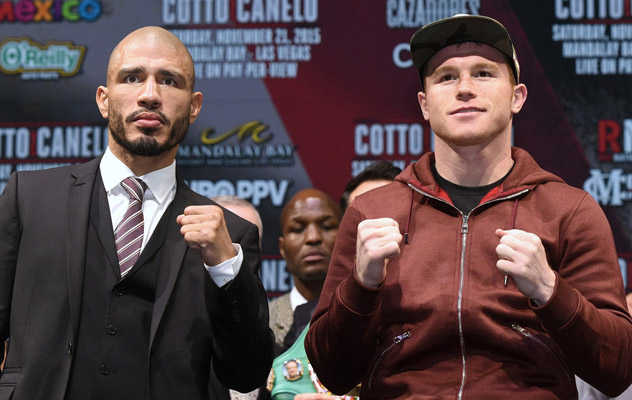The term "punching power" is convoluted by a plethora of misconceptions. I have fighters I train who started out with little power but it had nothing to do with a lack of strength or bone density. They just didn't understand more attractive concepts like trunk rotation, leverage, keeping elbows down. Now that their form is tweaked some of them realize that they can generate considerable force. Some of them are quick, and often times speed can hurt worse than brute force. Inflict more damage
BUT...then there are the guys just born with something. I have one Amateur kid who just hits hard as Hell and never seems like he's trying to. I also train a girl who hits so hard the boys her age hate doing drills with her. One kid said: "Yeah I block her punches and still ended up with a headache."
In olympic lifting, one of the most important concepts an athlete needs to learn for improving his technique is the elimination of 'squish'. A simple example would be not having your arms fully extended when beginning your pull for a power clean; that little bit of extra range of motion, that
squish, before your arms are fully locked, translates into that little bit much less force on the bar, less velocity on your pull. The same principle applies at pretty much any other point along your kinetic chain; anywhere you might be wobbling, sagging, stretching, or
squishing during your movement, is points where energy is leaking out of your chain of movement. Basically, any points where you stop being a
single solid piece.
I think this principle is a major factor behind how some guys can seem to somehow hit a lot stiffer than others.
There's a clue is right there in that colloquial term, 'stiffness'. One of those things that lurk on that dreamlike edge, of something on some level sensed yet not yet fully consciously realized:
'that was a stiff hit', 'this guy is a real stiff hitter', et cetera.
Mass times acceleration is the basic physics; what makes a punch different from something like a shell launched out of a howitzer though, is that it's not just a single short moment of applied force; you can continually apply force at any time before, during, and after the moment of impact. Further more, the object being accelerated is not just a single undifferentiated mass, but a melange of materials that can have different properties depending on how they are cued.
So from a practical coaching perspective, there's not just two, but
three major factors to pay attention too for power generation; ballistic acceleration, mass transfer, and
continuity of exertion.
Most people understand ballistic acceleration: the initial burst of force that is the major factor in speed or time to target.
Mass transfer is something that is not always immediately obvious, but most people can understand the idea when it is explained.
Continuity of exertion however, is often not something that is even thought of at all.
If a guy is moving fast, is moving his weight, is moving more weight at more speed into the strike, but is never the less not fully 'engaged' at the moment he hits someone... then it's like he's hitting them with a pillow or shock absorber; even if you're putting your weight into it, power is being lost through leaks in your chain, through
squish. If he is fully 'engaged' though at the moment of impact, then it's like hitting them with a solid bar. Solid hitting technique is when you are solid,
one piece.
It's for reasons like this that i think exercises that were often recommended by savvy old coaches like isometric wall pushes in punch form are so good for building power, because it cues engagement of your whole kinetic chain at extension, at the moment of impact; from the tips of your toes to the ends of your knuckles, everything in between.
Some guys, neuro-muscularlly, are just naturally better at being relaxed while in motion - increasing power - and become braced and fully linked at the moment of impact - increasing power; and with good methods can become even better. Others may need more specific coaching to be made more self-aware of their movements, so they can practice until it comes more naturally.
('Relaxation rate', the speed at which a subject's muscle fibers can go from fully active to fully inactive, was a landmark finding in sports science for predicting athletic success.)
Some more modern coaches, again sort of intuit this on some level, and often try to cue this 'pulse' with admonishments like 'don't just punch at him, punch
through him'.
I'd say in general the initial ballistic acceleration is probably the least important part of stiff hitting, reflecting real world observations. If you watch board breaking competitions, many of the guys who fail to break their target are often guys who
started their strike with fast acceleration, but who visibly 'collapse' at the moment of impact. The guys who make it look easy however, often start smooth and controlled, and ramp up their force through the movement, reaching maximum acceleration just at the moment of impact.
Optimum form for consistent power is not necessarily optimum in the ring however (since it is highly telegraphed), so the real question is rather not just how to hit with more power, but how to hit with more power... in ways that are tactically effective and defensively responsible. In which case the main takeaway here would be the continuity of exertion, the pulse or brace at the moment of impact. Whether it's a quick jab or a lunging overhand cross, if you are braced and fully linked at impact, then you are hitting them with a solid bar rather than a pillow, and all your punches will be more efficient, have more effective power.






